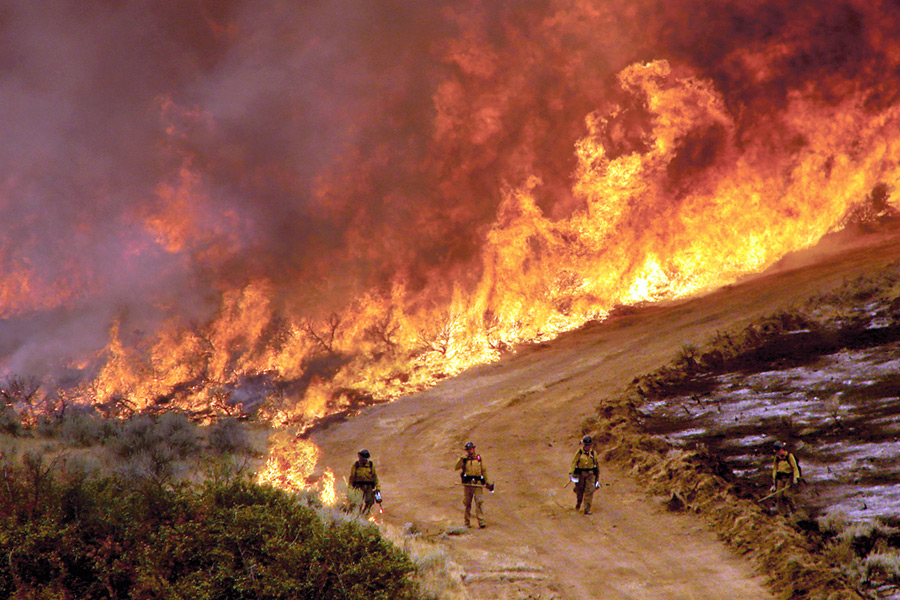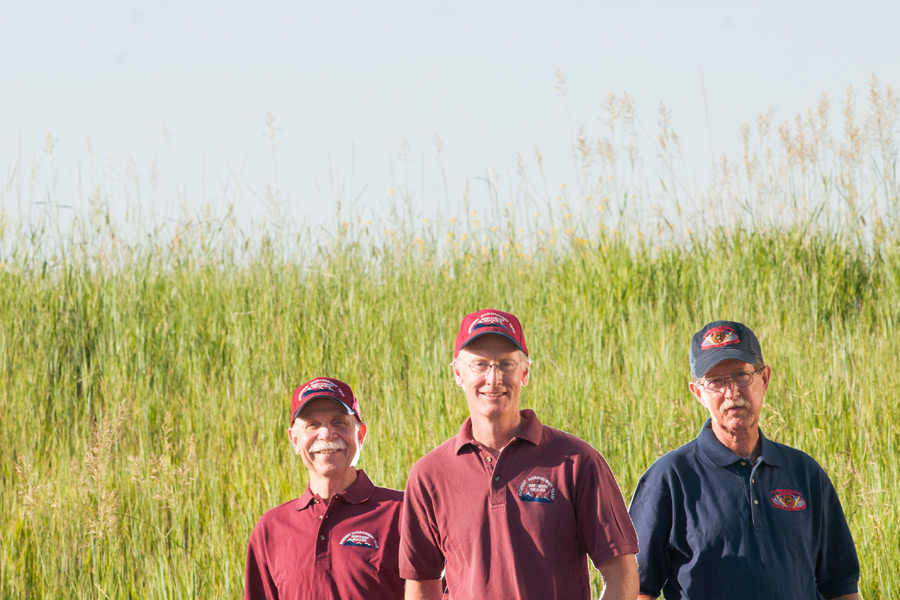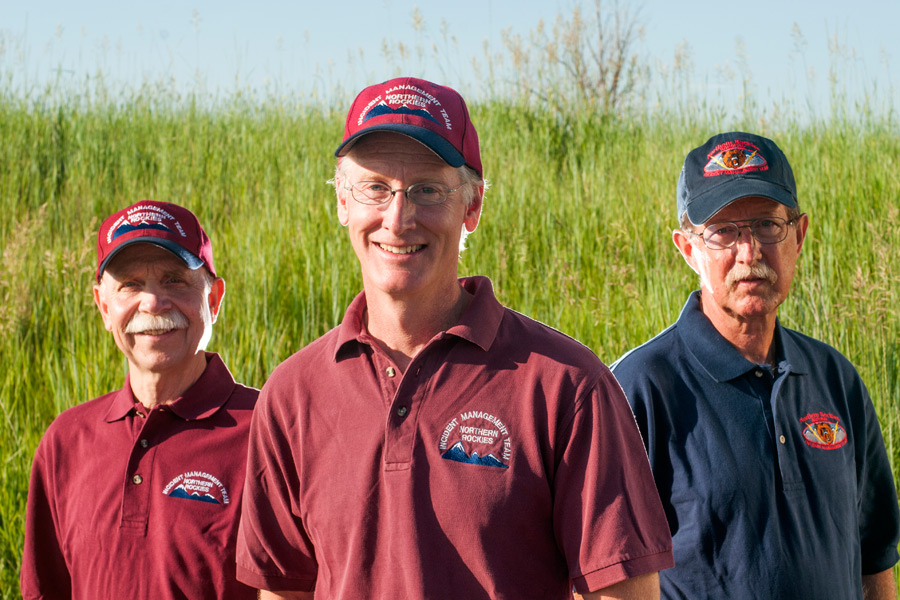Two years ago in early June, Greg Poncin and his elite team of firefighters arrived in the Arizona desert from Northwest Montana. The Wallow Fire on the eastern border near New Mexico had roared to life, growing from a campfire ember to an 840-square-mile “incident of national significance,” which required the best resources available in the U.S.
No sooner had Poncin arrived than another, more volatile firestorm arose south of the Wallow. The emergent blaze, burning in explosive flash fuels near the Mexican border, was running toward the city of Sierra Vista and its population of 43,000.
Suddenly diverted and with no time to spare, Poncin and his team mobilized.
The Monument Fire quickly became national news. It was Poncin’s first as a Type I incident commander.
By 3 p.m., the blaze bellowed toward the city, fueled by dry winds and triple-digit temperatures. The flames reduced 40 homes to ashes and knocked out electricity and cell-phone service. Hundreds of firefighters wielding pulaskis and shovels worked alongside bulldozers scrambling to establish containment lines in the rugged canyon terrain. Heavy air tankers painted the land red as flames torched into the sky.
Within days, the fire swelled to 30,000 acres, burned 80 buildings and forced the evacuation of 13,000 people. The nation followed the fraught efforts of Poncin and his team on television and in newspapers.
Under heavy scrutiny and faced with the most challenging conditions in his long career fighting fire, Poncin tried to answer the question asked of him day after day: What are you going to do?
Poncin trusted in his team of men and women from Montana and across the Northern Rockies. He relied on the years of training from his mentors back home in Kalispell, Wally Bennett and Steve Frye. He remembered the lessons his firefighter father taught him as a kid growing up in the mountains outside Eureka.
“It’s essentially bringing order to chaos,” Poncin said of the incident management team’s goals.
Poncin’s team unleashed an aggressive offensive, fighting fire with fire. The blaze made two other large-scale runs, but the nearly 1,000 firefighters, bulldozers and other resources successfully defended against the infernos.
In less than three weeks, the crews wrangled the Monument Fire and kept it from overrunning the community.
Before departing back to Kalispell, Poncin and his team were called to a town meeting. As a sign of their gratitude the residents of Sierra Vista came together and awarded Poncin the key to the city. He keeps it in his desk today.

In the summer and fall months across the American West, the arid climate dries timber stands into large matchsticks. The grasses and shrubs that cover the plains and mountain ranges wither. A dry thunderstorm can arrive in a flash, and just one lightning strike, or a single errant spark, can ignite the landscape into a firestorm.
Violent wildfires have become commonplace in recent years. In the last decade, the country has suffered some of the worst fire seasons in its history. Last year more than 9.3 million acres burned nationwide for just the third time since at least 1960. Only 2006 and 2007 saw more acres burned. Montana experienced its worst fire year since 1910, with more than 2,000 fires burning more than 1.1 million acres.
According to records studied by a research group called Climate Central, the average forest fire season in the West is now 75 days longer than 40 years ago. The same research showed that during recent decades, seven times as many fires burned at least 10,000 acres compared to the 1970s.
When wildfires reach their most complex and dangerous, communities across the U.S. rely on a cache of 16 elite interagency resource squads, called Type I Incident Management Teams.
The teams feature every skilled position needed to tackle urban or rural disasters year-round, including tornadoes, shuttle crashes and most commonly, brutal wildfires.
These teams of more than 50 specialists are under the guidance and direction of incident commanders, who are among the highest-ranking firefighters in the U.S.
In a rather unique scenario, among the roughly 40 incident commanders currently active and certified, four are from Northwest Montana.
Greg Poncin, Wally Bennett and Steve Frye are longtime firefighters working with the Montana Department of Natural Resources and Conservation out of the land office in Kalispell. Doug Turman is another Type I commander based out of the DNRC’s Libby office. Bob Sandman was a fifth IC from this corner of the state with the DNRC before retiring a couple years ago.
“That does make you feel proud about the organization we have and the reputation that we can put forward,” Ted Mead, chief of the DNRC’s fire and aviation management division, said about the collection of high-ranking commanders.
“When we have the most complex fire incidents, not just in Montana but across the country, that’s the level of experience and leadership we go to – our Type I team. Those teams continue to be relied upon any time we have extreme fire seasons.”
It’s estimated that for a firefighter to climb the ranks and receive all the certifications needed to become a Type I IC, it would take 25 years from start to finish.
Between Frye, Bennett, Poncin and Turman are more than 150 years of combined experience fighting some of the country’s largest blazes over the last five decades.
“What comes to mind when I think of them is excellent leadership, doing the right thing for the right reasons and always seeking to improve even though they’ve been doing this for a long time,” said Steve Gage, the assistant director of operations for fire and aviation with the U.S. Forest Service.
“They are willing to take a stand where the stand needs to be taken,” he added. “(As a Type I IC) some days it’s almost like you’re standing on a knife’s edge.”
Gage, who became Type I certified in 1997, has known and worked alongside the state’s ICs for almost 30 years.
“They’re very well respected,” he said. “I’ve told them before, I’d go with any one of them wherever they went.”

Last week was supposed to be a lighthearted gathering among three longtime friends and colleagues. But when Frye, Bennett and Poncin sat down together in Kalispell on July 1 to reflect on their lifetimes on the fire line, the mood was somber.
In Arizona the night before, a wildfire killed 19 members of the Granite Mountain Hotshots, which included 18-year-old Dustin DeFord from Ekalaka in Eastern Montana.
The Yarnell fire is one of the deadliest in U.S. history, and the most deadly since 1933, when a fire killed 29 members in California.
Along with the fallen crews’ family and friends, fellow firefighters across the nation mourned the loss, including the three men sitting in Kalispell.
“It just hits you in the gut,” Frye said, shaking his head. “The firefighting community is like one big family. When something like this happens, everyone feels it.”
The fire started June 28 after lightning hit. It initially appeared manageable, but the fire turned deadly in an instant when violent winds shifted and trapped the crew.
“We’ve all been exposed to unanticipated wind shifts,” Frye said. “Things happen quickly. If you’re a long way away from a safe place, you could pretty easily get trapped.
“The stakes are very high.”

The story of how Northwest Montana became home to three highly-skilled incident commanders all ties together.
Bennett began fighting fire when he was 16 years old growing up in Hot Springs. In the summer of 1963, before his senior year of high school, he lied about his age so he could join a fire crew. Wearing blue jeans and a plain work shirt, he was hired as an emergency firefighter and jumped on an engine.
Frye was also 16 years old and still in high school when he picked up his first pulaski. A native of Minnesota, Frye and one of his high school classmates caught the train to Spokane in the summer of 1965 and joined a fire crew in the small town of Elk River. Unlike Bennett, who received no formal training, Frye experienced “guard school,” led by two hardy veteran firefighters.
“We showed up with gloves and the instructor said, ‘You aren’t wearing gloves.’ He told us, ‘I want your hands to get bloody then hard,’” Frye recalled. “He accomplished that.”
Frye responded to 20 wildfires that first summer, digging line and learning the strategies of suppression with limited resources.
“Our crew bosses were very experienced,” Frye said. “They had seen a lot of fires and had been involved with wildland fire management for a long time. And they took very good care of us.”
Frye returned the following summer and went on to be a fire lookout at Swiftcurrent Lookout in Glacier National Park. He worked for the National Park Service from 1970 to 1978 before eventually joining the state.
Meanwhile, Bennett stayed with initial attack fire crews and earned his wildland education through first-hand experience. He eventually transferred to Plains and tallied certifications that turned him into one of the state’s top resources, like Frye.
It was through the mentorship of men like Dave Poncin, Greg’s father who fought fire for the Forest Service and was one of the nation’s first official Type I incident commanders, that Bennett and Frye pursued the top role of national commander.
“It was those folks, as examples and mentors, that I aspired to be like,” Frye said. “I feel like I am where I am on the shoulders of guys like Greg’s dad.”
The same can be said about the generation of firefighters after them.
In 1981, at 18 years old, Greg Poncin took a seasonal job fighting fire for the state’s Stillwater Unit and looked up to his father Dave, who started fighting fire in 1956.
“Once fire gets in your blood, it’s kind of hard to get out,” Poncin said.
He stayed involved with fire and moved to DNRC’s Kalispell Unit in 1995. Through the years, he became familiar with two seasoned firefighters who were always offering encouragement.
Bennett and Frye helped train Greg the same way they’d trained under Greg’s father.
Poncin, 50, is now in charge of one of two Type I teams in the Northern Rockies. Turman leads the other regional team.
Bennett, who turns 63 this summer, and Frye, 65, still aid as deputies or possible fill-in commanders for both of their former teams.
When asked about retirement and the chance to spend summers relaxing by the lake, both men seemed to scoff at the notion.
The wildland firefighting community, though spread out across the nation, is indeed a family of men and women. Bennett and Frye aren’t ready to give that up.
They are also focused on making sure the next generation is ready. As wildfires become more common and volatile, the need for highly certified firefighters is greater than ever, they said.
“The difficulty that we have of sustaining our Type I teams in terms of qualified individuals is a concern,” Frye said.
“Today’s fires, because of size and location, are making things a lot more challenging. All of us, Doug included, are committed to this agency and this job first. That’s the priority.”
